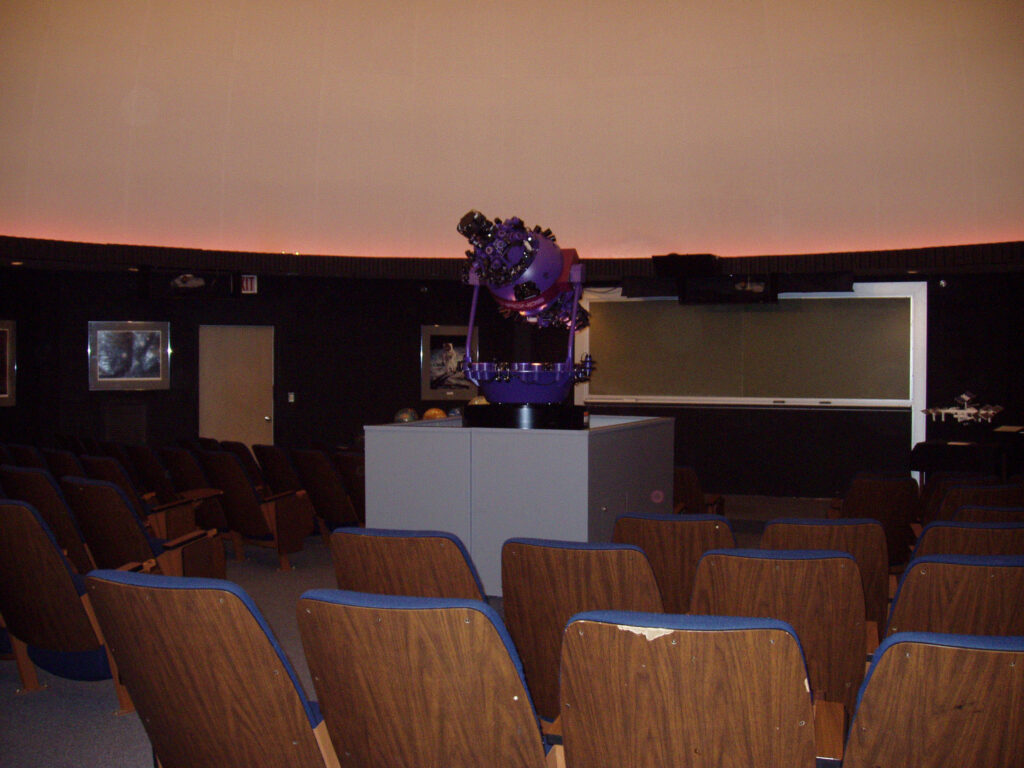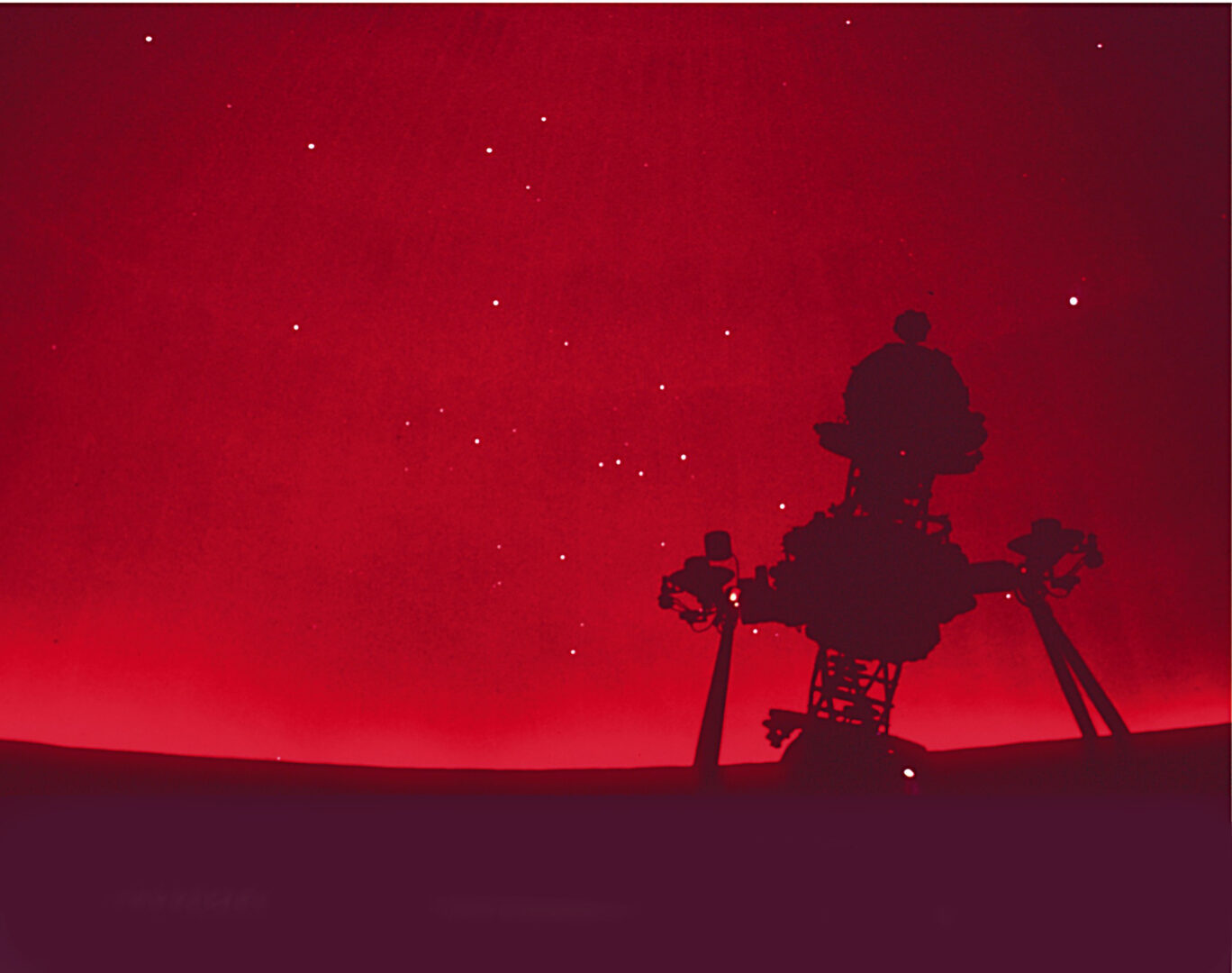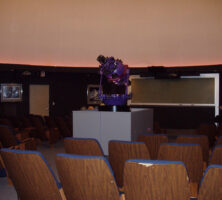Archaeologists believe that locations for studying astronomy emerged very early in Georgia, and they have identified such potential sites as Rood Creek Indian Mounds, which are located along the Chattahoochee River and are tantalizingly reminiscent of ancient astronomical observatories found around the world.
By the early nineteenth century more formal astronomy programs had been established at Georgia’s colleges and universities. Today the state has an enviable record of professional astronomers participating in world-class research, much of which has been recorded since the 1920s in the Georgia Journal of Science, published by the Georgia Academy of Sciences. In addition to professional astronomers, Georgia also boasts a number of amateur astronomers, many of whom are members of the American Association of Amateur Astronomers. Both amateur and professional astronomers belong to the state’s many astronomy clubs, which have made significant contributions to astronomy education in the second half of the twentieth century.
Astronomy in Higher Education
The University of Georgia (UGA) in Athens and Valdosta State University (VSU) in Valdosta are currently the only universities in Georgia to offer an undergraduate degree in astronomy. UGA also offers a doctorate in astronomy, as does Georgia State University (GSU) in Atlanta. In 1989 several academic institutions with relatively small astronomy departments and with faculty engaged in astronomical research, including UGA and VSU, formed the Southeastern Association for Research in Astronomy (SARA). Since the summer of 1995, SARA has provided research experiences for undergraduates who are sponsored by the National Science Foundation.
At UGA astronomy was taught in the late 1800s to juniors or seniors through the Department of Natural Philosophy, which became the Physics and Astronomy department in 1887. By 1911 UGA was awarding degrees in physics. A twenty-four-inch reflecting telescope was purchased in the early 1960s, and by the end of the decade doctoral degrees in physics were being awarded.

During the 1960s, the planetarium and large telescope at Valdosta State University (VSU) attracted undergraduate astronomy students from across the country. In 2003 VSU obtained a sixteen-inch telescope.
GSU currently boasts several advanced astronomical research programs: the Program in Extragalactic Astronomy, which concentrates on the astrophysics of active galactic nuclei; the Research Consortium on Nearby Stars, which seeks to understand the nearest of the sun’s neighbors; and the Center for High Angular Resolution Astronomy (CHARA), which analyzes the astrophysical properties of stars. CHARA now consists of an optical/interferometric array of six telescopes located on Mount Wilson in California.
Observatories
Several universities in Georgia maintain observatories with research-grade telescopes. At Agnes Scott College in Decatur, students in undergraduate astrophysics use a thirty-inch Cassegrain telescope, which was purchased in 1947 and upgraded in 1998. Included in the college’s Bradley Observatory is a radio telescope and a number of smaller telescopes.
Hard Labor Creek Observatory (HLCO), located in Rutledge’s Hard Labor Creek Park, opened in 1986 to house a sixteen-inch Boller and Chivens telescope for GSU. The observatory also houses a sixteen-inch Meade telescope and a one-meter Multiple Telescope Telescope (MTT) instrument. The largest astronomical telescope in the Southeast, the MTT is used for astronomical spectroscopy. Although HLCO has become home for several professional astronomers from GSU, it also offers a public viewing program.
During the 1990s the Georgia Institute of Technology Research Corporation obtained two refurbished thirty-meter antennae (built by AT&T), located in Woodbury, for the purpose of joining the Search for Extraterrestrial Intelligence project with Greenbank Observatory in West Virginia. The antennae were abandoned in 2000, only to be purchased by a farmer for agricultural purposes.
The Coca-Cola Space Science Center at Columbus State University in Columbus opened in 1996, and students from around the world were invited to design proposals for studying the sun. Winning students and schools were awarded time on the remote-controlled sixteen-inch solar observing telescope in the center’s Mead Observatory.
Young Harris College Observatory, dedicated in 2002, houses a sixteen-inch Schmidt-Cassegrain telescope to teach undergraduates, and North Georgia College and State University in Dahlonega uses a sixteen-inch Boller and Chivens reflecting telescope for the same purpose.
Mark Smith Planetarium at the Museum of Arts and Sciences in Macon houses ten- and fourteen-inch Celestron Schmidt-Cassegrain telescopes, as well as a seventeen-inch Dobsonian for public observations. The Fernbank Observatory, part of the Fernbank Science Center in Atlanta, which has offered astronomy education to the public since its 1967 opening, houses a thirty-six-inch Cassegrain reflector, one of the largest telescopes ever dedicated to public viewing.








